Revolutionizing Food Preservation: How Advanced Chemical Materials Are Redefining Shelf Life and Sustainability
- Addtime: 2025-04-08 / View: 586
The food industry stands at the crossroads of unprecedented innovation, driven by dual pressures to extend product longevity while minimizing environmental harm. Traditional preservation methods—chemical preservatives, synthetic packaging, and energy-intensive refrigeration—are increasingly scrutinized for their ecological footprint and health implications. Enter a new generation of chemical materials engineered to balance functionality with sustainability. From self-sanitizing surfaces to oxygen-barrier biopolymers, these breakthroughs are quietly transforming how food is stored, transported, and consumed. This article delves into cutting-edge applications reshaping the global food supply chain.
● The Rise of Edible Preservation Layers
Imagine a future where fruits and vegetables arrive at grocery stores coated in an invisible, tasteless shield that doubles their shelf life—without refrigeration. This is no sci-fi fantasy but the reality of edible coatings, a technology gaining traction among agribusinesses. Companies like Apeel Sciences are pioneering plant-based "peels" derived from lipid and glycerol molecules found in fruit peels and rinds. Applied as a spray or dip, these coatings form a microscopic barrier that slows water loss and microbial invasion.
In trials, Apeel-treated avocados showed a 50% slower ripening rate, reducing spoilage in supply chains where up to 40% of produce is discarded before reaching consumers. Similarly, Carnotropin, a protein-based coating developed by Israeli startup Tetra Laval, extends dairy product shelf life by inhibiting bacterial growth. These materials bypass plastic wraps and wax coatings, aligning with zero-waste initiatives.
● Self-Sanitizing Packaging That Fights Contamination
Foodborne pathogens like E. coli and Listeria cost the global economy $15 billion annually in medical expenses and recalls. Enter photoactive packaging, which harnesses light to neutralize bacteria. Materials infused with titanium dioxide (TiO₂) nanoparticles undergo photocatalytic reactions under UV or LED light, producing reactive oxygen species that dismantle microbial cell walls.
Japanese firm Toppan Printing has commercialized "Light-Powered Packaging", which reduces bacterial load on ready-to-eat meals by 99.9% within 24 hours. Meanwhile, BioCote integrates silver and zinc ions into plastic films, creating antimicrobial surfaces that remain effective for up to five years. These materials are particularly critical in meat and seafood packaging, where contamination risks peak.
● Oxygen-Scavenging Polymers: The Invisible Guardians
Oxidation is the silent killer of food quality, causing rancidity in oils and nutrient degradation in dry goods. Active polymer films embedded with iron-based or enzymatic oxygen scavengers are now embedded directly into packaging structures. When sealed, these films react with residual oxygen, prolonging freshness without chemical additives.
Amcor, a global packaging leader, recently launched "OxyActive", a recyclable polyethylene film that extends shelf life of snacks by 30%. Unlike sachet-based scavengers, these polymers eliminate consumer confusion while ensuring consistent performance. The technology is particularly transformative for developing markets, where inconsistent cold chains accelerate spoilage.
● Liquid Packaging Reinvented: Seaweed and Alginate Solutions
Single-use plastic bottles and cartons account for 30% of global plastic waste. Startups like Notpla and Skipping Rocks Lab are replacing them with alginate-based capsules, derived from brown seaweed. These water-soluble pods form flexible, biodegradable containers when calcium ions crosslink with alginate polymers.
At the 2022 London Marathon, 100,000 Notpla pods replaced plastic water bottles, dissolving harmlessly if discarded. Beyond water, the technology promises applications for sauces, condiments, and even liquid detergents—each encapsulated in a taste-neutral, edible shell.
● Case Study: How Nestlé Is Scaling Bio-Based Foams
Multinationals are accelerating adoption of chemical innovations. Nestlé’s "Smart Packaging Lab" developed "BioNes", a cellulose-based foam that cushions glass bottles during transit. Derived from wood pulp, the foam outperforms polystyrene in shock absorption while decomposing in home composts within 30 days.
Since 2023, BioNes has reduced Nestlé’s packaging waste by 1,200 tons annually, with plans to expand to dairy and confectionery lines. The material’s success underscores how scalable biochemistry can disrupt entrenched petrochemical norms.
● Circular Chemistry: Packaging That Feeds the Soil
The next frontier lies in "circular materials" designed for agricultural reuse. Lactopack, a Dutch startup, created "Soil-to-Soil" trays from lignin—a byproduct of paper pulping. When composted, the trays release nutrients that boost crop yields, closing the loop between packaging and farming.
Similarly, Future Meat Technologies uses chitosan films from shrimp shells to wrap plant-based meats. After use, the films decompose into soil-enriching chitin, a nutrient for microorganisms. These systems reimagine waste as a resource, a principle central to the circular economy.
● Regulatory Hurdles and Consumer Trust
Innovation faces speed bumps. The FDA’s Food Contact Substance Notification process can take 18 months, delaying market entry. Meanwhile, consumers remain wary of "chemical-sounding" ingredients, even when benign. Transparency campaigns, like Danone’s "Clean Label Pledge", are critical to demystifying material science.
● The Future: Programmable Materials and AI-Driven Design
Looking ahead, programmable polymers could adapt to environmental conditions. Researchers at MIT are developing "smart films" that release preservatives only when pathogens are detected, minimizing additive use. Meanwhile, AI platforms like Chemical.ai are accelerating discovery of high-performance biopolymers, slashing R&D timelines from years to months.
● Conclusion
The food industry’s material revolution isn’t just about swapping plastics—it’s a paradigm shift toward intelligent, regenerative systems. As chemical engineers continue refining these tools, the line between packaging, preservation, and the environment will blur. For an industry responsible for 26% of global emissions, these materials aren’t just innovations—they’re necessities. The race to feed 10 billion people sustainably may well be won in the lab, one molecule at a time.






